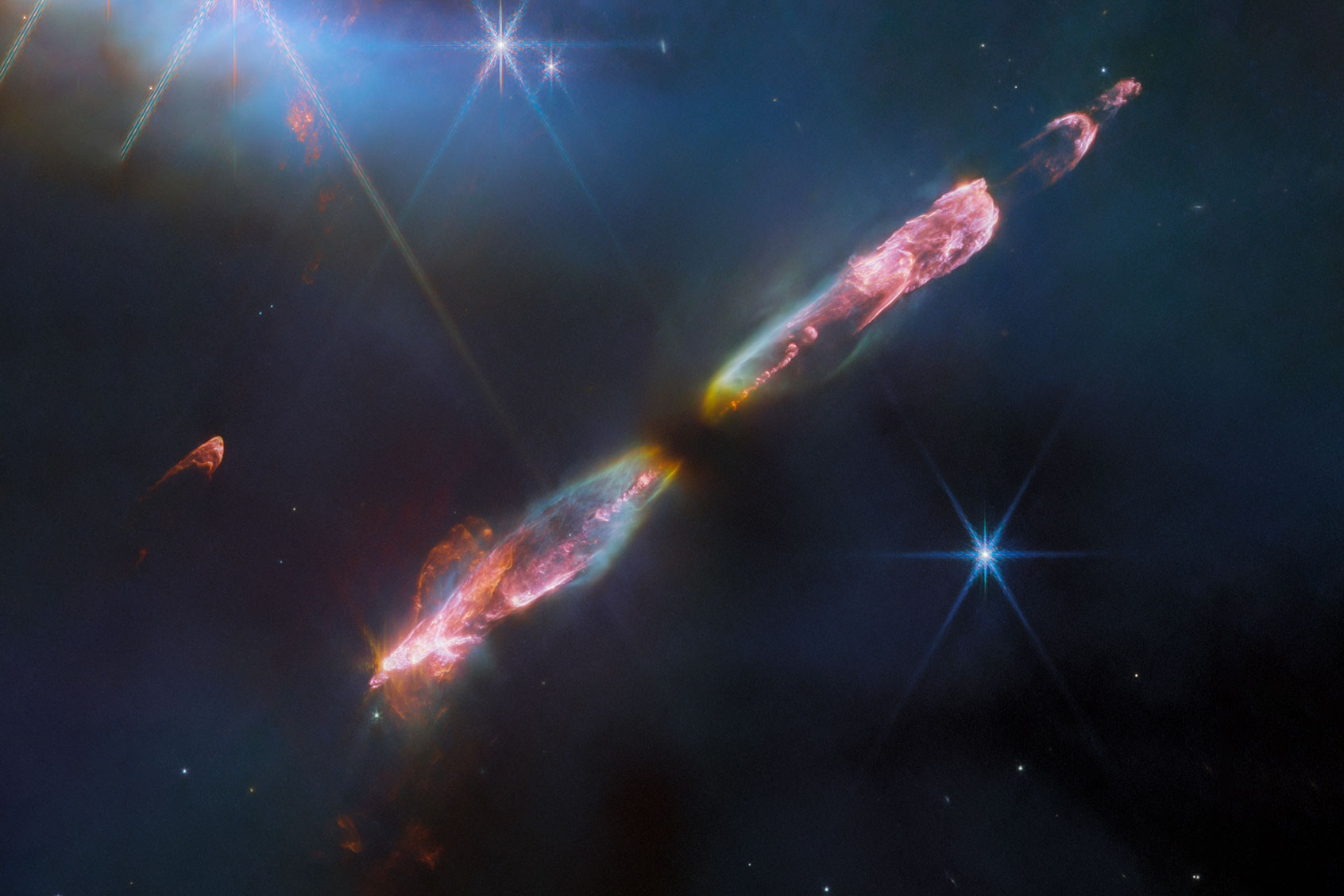Researchers in Dublin documented a newly born star with an infrared camera using the James Webb Space Telescope, which showed hot molecular material jetting out in opposite directions from the new star in a formation that resembles Darth Maul’s lightsaber.
The team published a paper in Nature describing their findings last week and today released an ultra-high-resolution capture of the beams emitted from the star, named Herbig-Haro 211. The star, which resides in the Perseus constellation, is about 1,000 light-years away from Earth and is just a few thousand years old, which on galactic timescales means it’s just a baby. One day, Herbig-Haro 211, or HH 211 for short, will likely grow into a star much like our own, but it currently has a mass that is about 8% of our solar system’s star.
Webb was able to capture infrared light emitted from these bipolar light beams, a blend of molecules like hydrogen, carbon monoxide and silicon monoxide. In this star system, scientists have observed huge bow shocks undulating toward and away from us, as well as an inner jet that seems to “wiggle” in symmetry on either side of the star. According to NASA, this “suggests that the protostar may in fact be an unresolved binary star,” meaning there could actually be two stars beneath this mysterious cloud of molecules. If it’s a protostar, on the other hand, that means it’s still gathering enough materials to form itself.
“The research reveals that the very youngest stars appear to emit beams of almost pure molecules, contrary to what astronomers thought before, and move very slowly,” said Tom Ray, a researcher on the Dublin team, in a statement about HH211. “How such beams are produced without the added ingredients of atoms and ions, is currently a mystery.”


